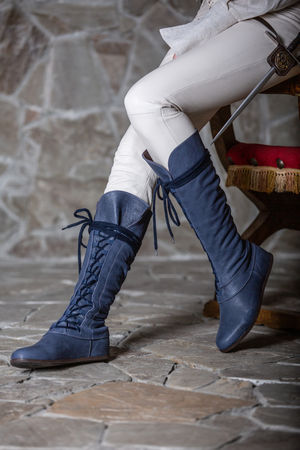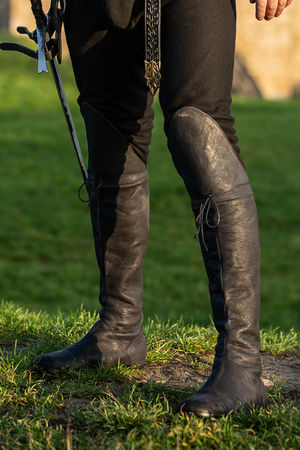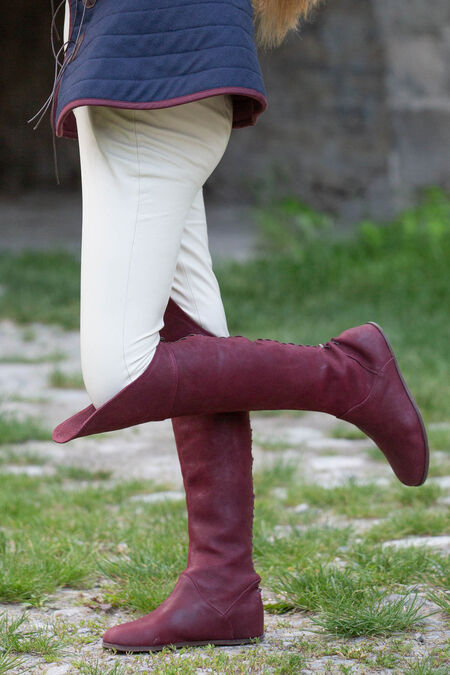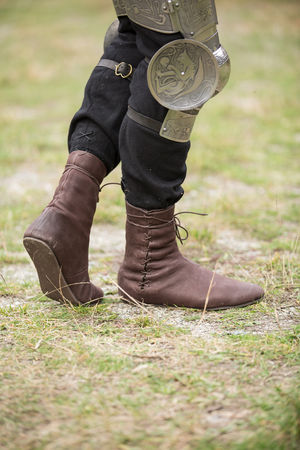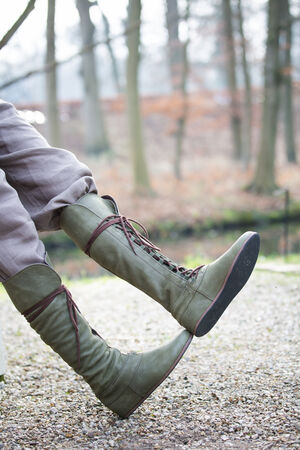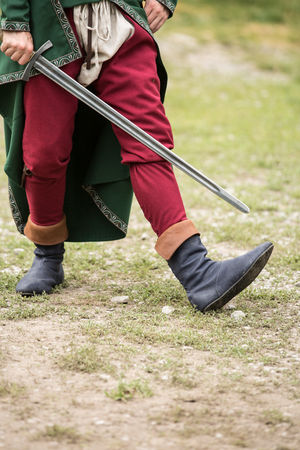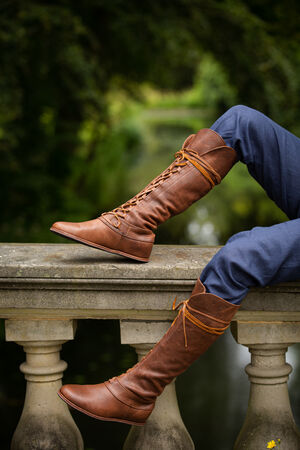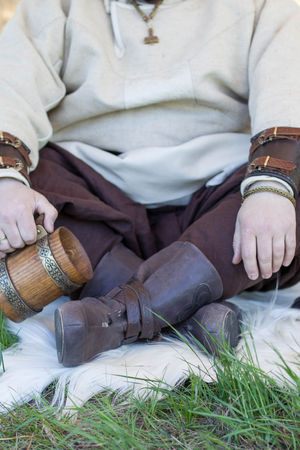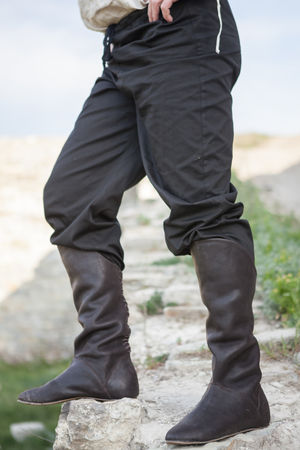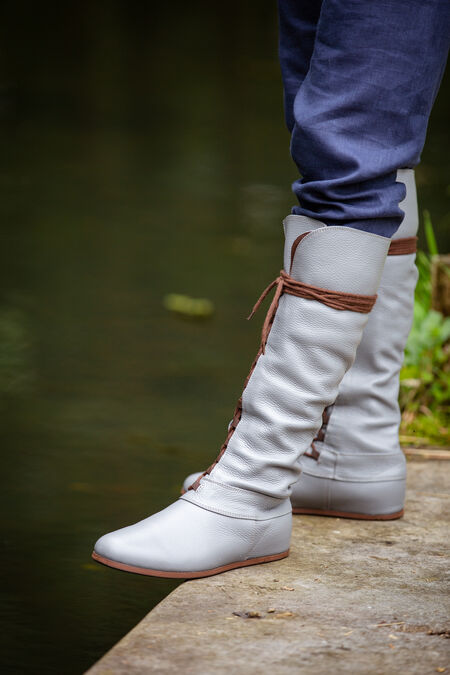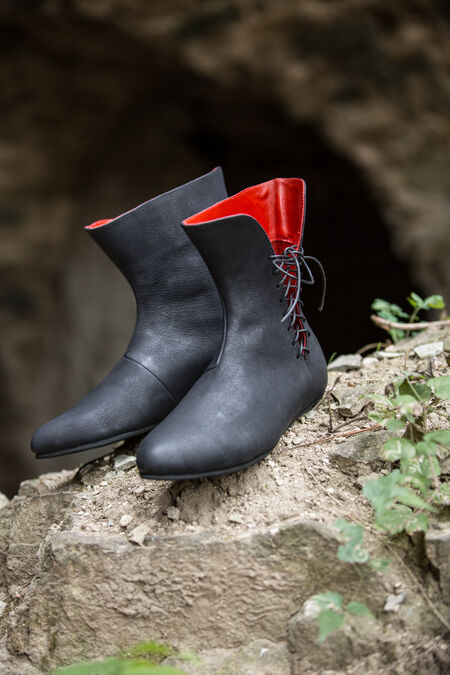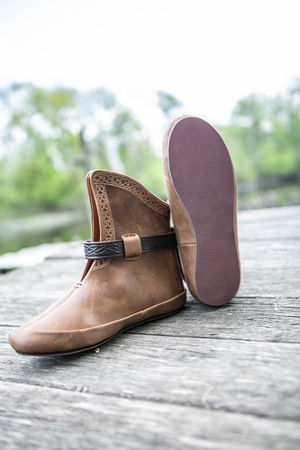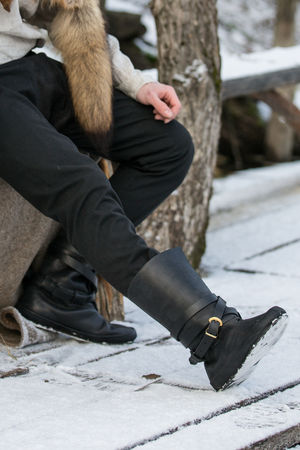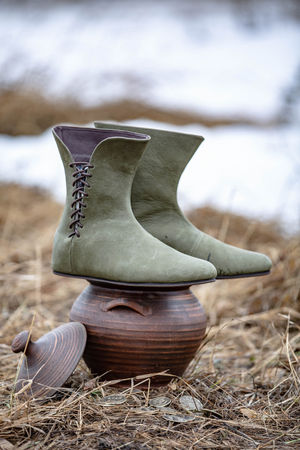Medieval boots
Medieval Boots for Sale
Leather shoes with high tops are a great for a variety of uses, whether you're working on a new LARP attire, running errands on the Ren Faire, or even taking part in reenactment tournament fighting. Giving preference to buy medieval boots, you get a universal remedy against morning dew, road dust, dirt, and mosquito bites. Our medieval boots store offers a wide range of genuine leather and suede models for ladies and gentlemen of different eras!
Ancient Boots
Early man invented boots to provide better protection to his ankles and calves. Most scientists are inclined to the version of the ancient Greek origin of the boots. Shoes with high carved sophisticated lacing were considered festive, ancient Greeks of both sexes wore them to a party. The new type of footwear spread from there to Rome, and then - to Byzantium. With tight-fitting tops and tapered at the ankle with straps, Byzantine boots still resembled stockings. In contrast, the eastern boots resembled the modern models. Traditional footwear of Persians, they naturally complemented the rider's suit. In the 6th century BC, Persians brought fine leather boots to Europe.
Medieval boots for men
The style of men's medieval boots varied depending on the region and the time period. Some boots were simple and practical, while others were more elaborate and ornate. The length of the boots also varied, with some reaching just above the ankle and others extending all the way up to the knee. We have a great selection of men's medieval boots in our shop, starting from Early Middle Ages to the classic knight boots look
Medieval boots for women
We love our customers and always trying to offer the best products possible. So, every time we design something new, we try to offer it in both versions, including medieval boots made specifically for female feet, taking into account the differences in the anatomy, to make a perfect, slim fit that looks great and feels like a second skin.
Middle Ages Boots
The first guild of shoemakers appeared in the mid-13th century. Obviously, there were no medieval shoe stores with ready-to-wear boots, so the wealthy ordered custom footwear from cobblers with numerous fitting, and the poor had to settle for the makeshift shoes. In continuation of this tradition, we produce custom medieval boots - each pair is made according to the customer's measurements. Citizens mainly wore shoes or low ankle boots, and boots with high tops were worn by peasants and travelers. They were laced, buttoned with buckles or wrapped around the legs with straps. The first mention of high-top boots falls on the 15th century. They were mainly men while riding.
Styles of Medieval Boots
Shoes with a long, narrow noses came into fashion in the 14th century - first in France, then in Burgundy; thence this fashion went to Germany, England, and Scotland. In the continuation of nearly a century, these shoes served as the hallmark of nobility. The boots with lapels and long tops, set behind the knee, were widespread in England. Whereas Germans favored wide and spacious shoe called "bear paw" because of its awkward toes. French introduced a new shape of a bootleg - wide and solid, it resembled the shape of a funnel. This style had emphasized harmony and beauty of the legs. Over time, the tops of the boots were becoming wider and shorter.
Warrior's Boots
Shoes with reliable soles always been an important part of a medieval warrior's equipment. The insole was usually stitched to the upper part of the shoe, then the shoe was wrenched inside out so that all the seams were inside of the boot. Thick leather outsoles have been sewn on from the outside. References to the heels and hobnailed soles are rare. Rigid boots with round toes were the best choice for the infantry. Poor soldiers tried to get wear-resistant boots, not hesitating even to borrow them from their fallen comrades.
Riding Boots
High boots were popular and practical for horseriding. Starting from the 15th century the rich knights wore elegant over-the-knee boots, called "jackboots". Thigh-length boots made of sturdy leather provided additional protection to their legs. Top of the shaft was usually tied to a belt. Parade boots were often sewn directly on the wearer's leg to make them fit like a glove.
Benefits of ArmStreet boots:
- authentic and fantasy patterns;
- medieval boots for men;
- medieval boots for women
- modern insole outsole cover with medieval looks
- custom sizes and off-the-shelf offers



